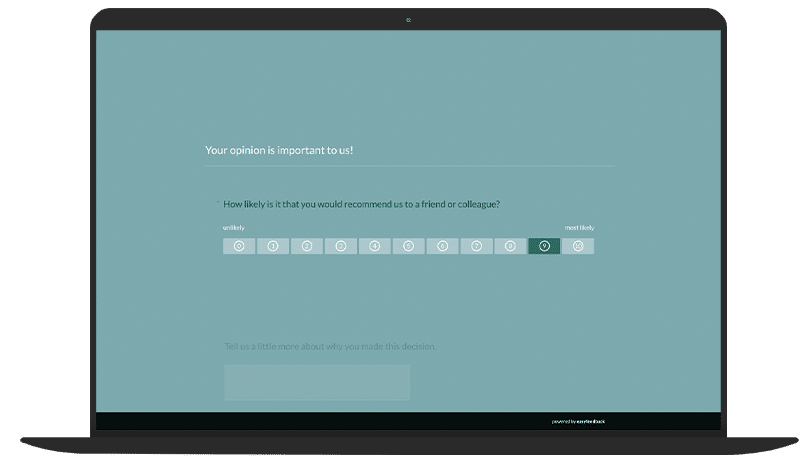Method: Create a customer-centric corporate culture
One of the most important measures for sustainable customer orientation is the establishment of a customer-centric corporate culture.
This means focusing on customer needs and wishes in all areas of the company – from product development to sales and customer service.

Actions:
- Training and education for employees:
All employees, from the sales team to customer service, should be regularly trained in customer orientation.
This promotes an understanding of the needs and expectations of customers and helps them to take these into account in their daily work. - Anchoring customer orientation in management:
Managers should make customer service a priority and integrate this aspect into the company’s objectives.
Method: Measure customer satisfaction through feedback and communication
In order to work in a truly customer-oriented manner, companies must regularly measure the satisfaction of their customers and respond to their feedback.
This can be done using various tools that provide valuable insights into the wishes and needs of customers.
Actions:
- Customer Satisfaction Surveys (CSAT):
Regular surveys make it possible to measure customer satisfaction with products and services and identify potential areas for improvement. - Net Promoter Score (NPS):
The NPS is a metric that indicates how likely a customer is to recommend a company to others. This metric provides valuable information on how satisfied customers are with the company’s overall offering. - Customer feedback via digital channels:
Companies should regularly search for and actively respond to customer feedback on social media and review platforms.

Method: Personalization of the customer experience
Customers want to be perceived as individuals and expect tailor-made offers.
Personalization is a central method of customer orientation, as it improves the experience of each individual customer and increases the likelihood that they will remain loyal to the company.

Actions:
- Data analysis and CRM systems:
Companies should collect and evaluate customer data in order to create personalized recommendations and offers. A well-functioning customer relationship management (CRM) system helps to personalize communication and interactions with customers. - Individual offers:
With the help of personalization strategies, such as personalized emails, discount campaigns or tailored product recommendations, companies can directly address the needs of their customers.
Method: Optimizing customer service
Outstanding customer service is often the decisive difference between a one-time buyer and a long-term, loyal customer.
To maximize customer focus, companies should continuously improve their service processes and ensure that customers are supported quickly and competently.

Actions:
- Multichannel support:
Customers should be able to receive support quickly via various channels (e.g. telephone, email, social media, chat). Support should be consistent and competent across all channels. - Self-service options:
Many customers prefer to solve simple problems themselves. A well-structured online help area or FAQ section can help to relieve the burden on customer service and increase satisfaction. - Training of service employees:
Service employees should receive regular training to improve both the technical knowledge and the social skills needed to deal with customers.
Method: Proactive problem solving and crisis management
A customer-oriented company not only acts reactively, but also proactively when it comes to potential problems.
If a company is able to identify and solve problems at an early stage before the customer is negatively affected, it strengthens customer trust and shows commitment to their needs.

Actions:
- Early detection of problems:
This can be done through monitoring systems that monitor the quality of products, for example, or customer feedback indicating problems. - Proactive communication:
Customers should be informed in good time if problems or delays occur. Companies that communicate openly and transparently with their customers create trust and avoid unpleasant surprises. - Crisis management strategies:
There should be clear procedures in place for dealing with complaints or negative experiences in order to offer solutions quickly.
Method: Technological support for customer orientation
Technology is playing an increasingly important role in the implementation of customer orientation.
It helps to better understand customer needs, optimize service processes and personalize communication.

Actions:
- Automated systems and chatbots:
These technologies can significantly improve customer service by answering frequently asked questions immediately and forwarding them to human employees if necessary. - Artificial intelligence (AI) and machine learning:
AI can be used to recognize patterns in customer data, create personalized offers and improve communication with customers. - Omnichannel strategies:
A seamless customer experience across all channels is made possible by digital solutions that integrate data from different touchpoints.
Conclusion
Customer orientation is a dynamic and ongoing process that must be geared towards the needs and expectations of customers.
Companies that invest in methods such as customer-centric company culture, customer feedback collection, personalization of offers and excellent customer service are better able to build long-term and valuable relationships with their customers.
By continuously adapting their processes and using innovative technologies, companies can ensure that they always meet the highest demands of their customers.
More about Customer Orientation
- Customer Centricity: the path to sustainable business success
- 8 Success factors of customer orientation
- Customer orientation: Importance and paths to success
- Customer orientation in marketing: The success factor for long-term growth
- Customer centricity: Strategies and actions
- Customer focus vs. service focus: Two sides of the same coin?
- Agility in the context of customer centricity: How agile companies are closer to their customers
- Example companies for excellent customer focus



